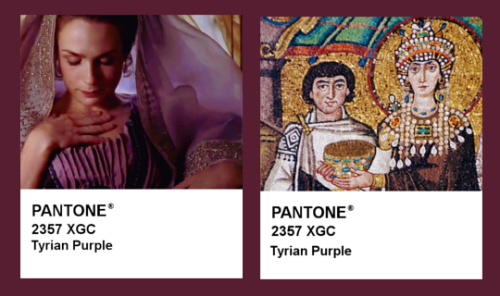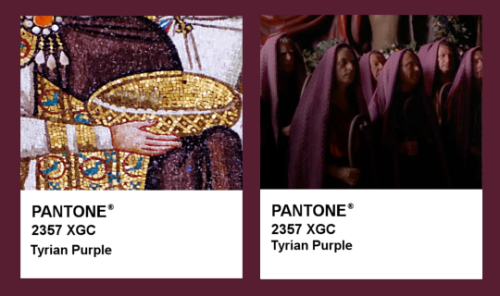HISTORY IN COLORTyrian Purple RGB: (123, 35, 109)Closest Pantone match: 2357 XGC Production of Tyria
HISTORY IN COLORTyrian Purple RGB: (123, 35, 109)Closest Pantone match: 2357 XGC Production of Tyrian Purple in the Eastern Mediterranean dates back to the Bronze Age. Workshops in the Phoenician cities of Tyre and Sidon harvested and crushed hundreds of thousands of Murex snail shells in order to extract the mollusk’s hypobranchial glands. The liquid extracted from the putrified glands produced a brilliant and durable dye, the hues of which only seemed to get brighter the more they were exposed to sunlight and wear. For example, the mortuary shroud of Charlemagne, who was buried in 814 CE, remains a vibrant purple even today. Due to its resource- and labor intensive production, Tyrian purple was prohibitively expensive. By the time of the Roman emperor Diocletian, half a kilogram of dye cost 150,000 denarii, or over a kilogram of gold. As such, wearing purple was a privilege restricted to the upper and ruling classes. In Rome, this privilege had morphed into a sumptuary law that restricted the use of purple to senior members of the ruling class. By the fourth century CE, only the emperor was allowed to wear purple. Due to this, Tyrian purple is also called imperial or royal purple. The production of dye nearly caused the Murex snail’s extinction in the Eastern Mediterranean, and its high cost illustrated the sharp divide between those who could spend lavish amounts of money dying a strip of cloth and those who couldn’t even dream of such a luxury. This all changed in 1856, when 18-year old William Henry Perkin accidentally discovered the first aniline dye, mauveine, a close match for the costly Tyrian purple. -- source link
#historyedit#tyrian purple#imperial purple#royal purple#pantone edit#pantone#my edit


